5G Transformation Hub
How 5G can turbo-charge wind energy
Advanced wake steering technology could increase wind farms’ capacity by 30-68%
Vayu AI is testing the use of a private 5G network to improve the performance of a six-turbine wind farm in Montana in the U.S. The company plans to pilot the solution in larger wind farms during 2022, as a precursor to a broader commercial rollout in both onshore and offshore wind farms.
Select a project
Contents
Challenge
As they rotate, wind turbines produce wake that interferes with the performance of nearby turbines, meaning they need to be spaced far apart. This limits the number of turbines that can be deployed in a specific location, reducing the output of the overall wind farm and inflating the cost of the energy produced.
Solution
With wind speed and direction changing frequently, autonomous drones can use 5G connectivity to relay real-time data about their position and the rotation of nearby turbines to a control system. Supported by machine learning, the system can optimise the angle of each turbine to increase the output of the overall wind farm – a process known as wake steering. this solution will enable wind farms to site turbines closer together, increasing their overall energy production.
Impact & Statistics
Plant-wide wake steering could enable a 30% reduction in the space between turbines in onshore wind farms, according to an April 2021 paper published in the Journal of renewable and Sustainable energy. Having assessed 1,500 u.S. wind farms, Vayu Ai believes that advanced wake steering technology could increase the capacity of wind farms by between 30% and 68%. For offshore wind farms, in which wind turbines need to be close together, wake steering will be vital, according to Vayu Ai.
Wider Implications
The data collected by 5G networks will allow for the creation of digital twins of wind farms – a major source of low carbon energy – that can deliver a step change in their efficiency and productivity. ultimately, wake steering could enable the energy produced by wind farms to be doubled, according to Vayu Ai. that would make it viable to build wind farms in many more locations, including offshore, where they are less likely to face resistance.
Stakeholders
Vayu Ai, Qualcomm, Palantir, mobile operators.
02
How 5G can turbo-charge wind energy
The data collected by 5G networks could lead to a step change in the efficiency and productivity of wind farms – a major source of low carbon energy.
On the Horseshoe Bend wind farm in Montana, Vayu AI is testing the use of 5G technology to relay the data required to create a detailed picture of how the turbines are performing.
Cameras mounted on drones capture real-time data on the performance and condition of the turbines and then transmit it via 5G to Vayu’s systems for analysis. The 5G connectivity is also used optimise the flight paths taken by the drones.
Real-time data is important because turbines create wake as their blades rotate, impacting other turbines. With a real-time view of wake patterns, the wind farm can make immediate adjustments to the angles of the turbines and improve overall output. “We have a big opportunity to expand the understanding of what’s happening with the wind on a wind farm, far beyond what you’re seeing specifically from the weather sensors on a met tower or on a stationary wind turbine,” says Jim Kiles, CEO of Vayu AI, a specialist tech company based in Silicon Valley.
Eventually, highly sophisticated and responsive “wake steering” could allow for wind farms to produce double the energy they do today, he adds. “It’s a huge game changer. 5G is able to do the things that have to be done in the wind industry. I don’t think many industries are more complex, with more challenging circumstances, than you get in wind.”
Although the Montana test bed only has six turbines, the 5G connectivity deployed there is yielding valuable insights into how to better harness the energy generated by currents of air. Vayu Ai’s ultimate goal is to create a so-called digital twin – a detailed 3d real-time model - of the wind farm. That digital twin could be used to routinely track the condition of each blade and the performance of each turbine, allowing for timely maintenance and adjustments.
The DTU (the Technical University of Denmark), the national renewable energy laboratory (NREL) in the U.S. and other experts have been talking about for 20 years, notes Jim Kiles. “it’s starting to happen now and the integration of a digital twin of a wind farm with digital twins of wind turbines gets you to the ultimate nirvana. you are going to have everything you need.”
Indeed, the broader wind industry regards 5G as a key enabling technology. The trade association wind Europe has described1 the “introduction of innovative wireless technologies” as “a major step forward for the wind industry...the transition to private 5G industrial network technology has an immediate impact on the connectivity of wind farms.”
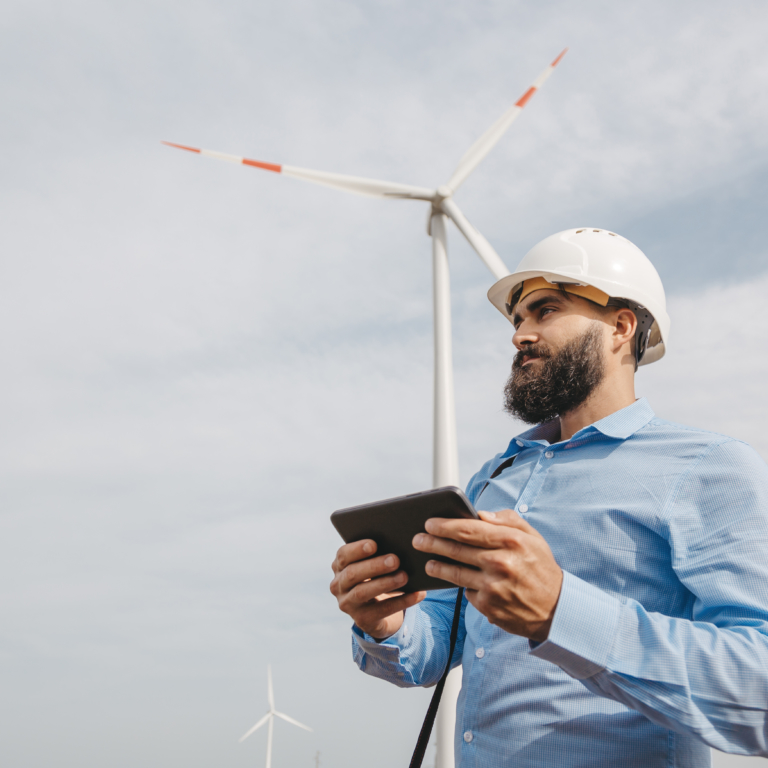

Jim Kiles
CEO of Vayu AI
Sources
- 1. https://windeurope.org/intelligence-platform/product/wind-energy-digitalisation-towards-2030/
03
The importance of wake steering
The data collected by 5G networks could lead to a step change in the efficiency and productivity of wind farms – a major source of low carbon energy.
“Wake behaves in mysterious ways. Physicists write pages-long formulae to measure how these things happen and ways to refine wake to the advantage of the wind farm,” says Jim Kiles. “But what we haven’t had is information about the impact of wake on things like curvature and expansion and the impact of elevation and ground. with a 5G implementation, you’ll be able to have the drones fly out, and measure what’s happening where they are.”
Vayu AI employs drones based on Qualcomm’s Flight RB5 5G chip platform, which can use low latency, high bandwidth 5G connectivity to transmit images and other data to a control centre in real-time. equipped with up to seven cameras, the drones can capture very detailed data about their surroundings, creating a dynamic 3d picture of their immediate environment.
The drones relay real-time data about the movement of the wind turbines to the Vayu platform, which processes this data and then recommends the implementation of control algorithms with yaw settings to optimise wake steering. As the wind direction changes, the system responds by making small adjustments to the angles of the blades in less than a second. Vayu uses machine learning techniques to process performance data and continually refine these adjustments. “Dealing with wake on a wind farm with 50 turbines is a major project, while 200 turbines it is a mathematical conversation that requires artificial intelligence and immediate access to data,” explains Jim Kiles. “the data problems are off the charts. it could be that 5G is the most useful technology perhaps in the history of wind, because it’ll allow you to access data that’s going to help you make important decisions that you’ve been trying to avoid for the past 15 years.”
As well as enabling real-time adjustments, Vayu’s technology can produce simulations that can be used to plan the lay out of a new farm. Such simulations could allow for a reduction in the spacing between turbines, potentially enabling a major increase in the overall output of the wind farm.
The drones Vayu AI is testing in Montana don’t need to be controlled by humans. Vayu Ai has developed a cloud-based system that automatically guides the drones around the turbines, obstacles and other drones. the system, which could be run in an edge location at the wind farm, receives the data captured by the drones’ cameras via a private 5G network. it processes the data and employs “3d camera polygon calculation” techniques to provide the drone with optical sensing capabilities, akin to radar. to optimise the flight path, the system can assess in real time the speed the drone is moving at, the speed at which obstacles around it are moving and the distances involved, Jim Kiles explains.
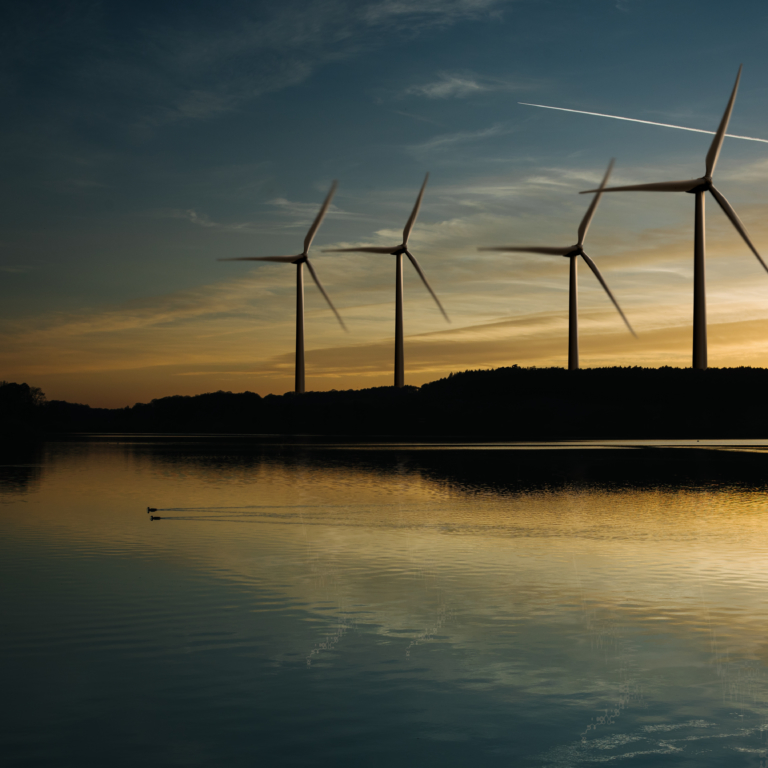
04
More low carbon energy, lower costs
Given the urgent need for low cost, low carbon energy sources, there is a strong socio-economic case for using 5G to optimise the performance of wind farms. the complex and dynamic nature of air currents means that real-time data is essential to optimise the performance of a wind farm. therefore, connectivity (and the data it captures) can have a major impact on the amount of energy produced, and ultimately the cost per watt of that energy.
“Around 2005, turbines got big enough to be impacted by wake badly,” explains Jim Kiles,” “So the industry started positioning the turbines further apart to avoid wake issues. the rule of thumb in the industry is seven rotor diameters separation between wind turbines.” But now improvements in wake steering (enabled by detailed real-time performance data) is allowing the industry to in-fill some of the gaps in wind farms or mount larger turbines on existing towers, “in effect, minimising the impact of the low density construction model,” he adds.
Plant-wide wake steering could enable a 30% reduction in the space between turbines in onshore wind farms, without impacting energy output, according to an April 2021 paper published in the Journal of renewable and Sustainable energy. “we’ve run assessments on 1,500 u.S. wind farms and we’ve confirmed their 30% model and we see certain wind farms with potential to increase at a much higher number,” added Jim Kiles. “The bigger issue is offshore. the turbines have to be closer together. they’re bigger. they’re going to have more weight and more powerful wake. And so they’re going to have to understand how to deal with that.”
Many existing wind farms are likely to be modernised, a process known as repowering, over the coming decade. Europe, for example, is home to nearly 12,000 wind turbines expected for decommissioning by 20242.
At the same time, new wind farms can benefit from insights gleaned from the analysis of the performance of existing sites. Gwec Market intelligence expects more than 469 Gw of new onshore and offshore wind capacity will be added in the next five years.
As 5G networks capture more detailed information about the factors that can subtly change the performance of wind farms, Jim Kiles expects that data to be shared across the industry. “we’re seeing more cooperation around what’s happening with events among different stakeholders and different wind farms,” he notes.
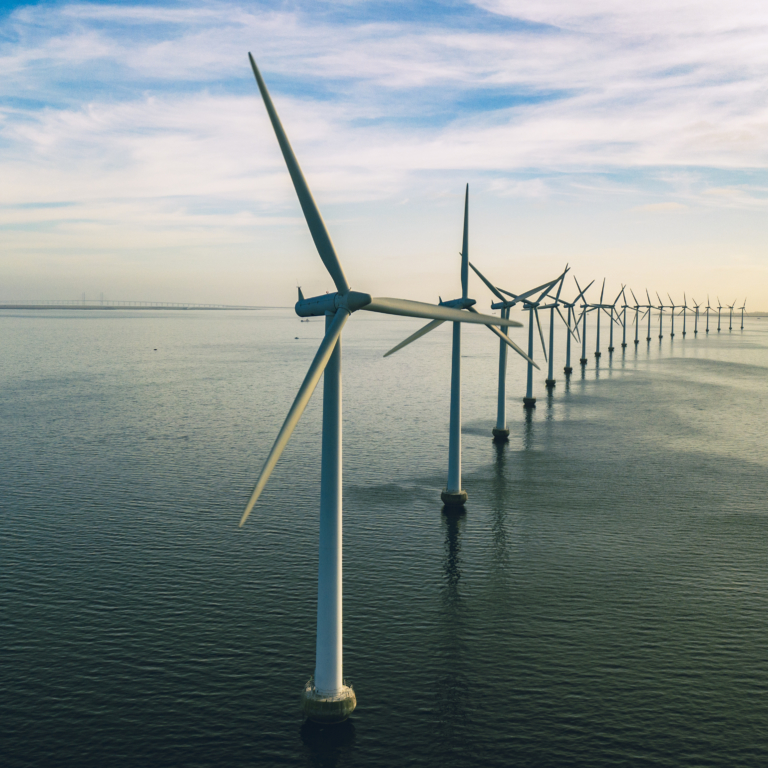

Jim Kiles
CEO of Vayu AI
Sources
- 2. GWeC Global Wind report 2021
05
Why will wind farms use 5G?
A key advantage of using 5G, rather than wi-Fi, on a wind farm, is it can be run entirely separately from the existing networking infrastructure. that’s important because it ensures the connectivity used for the wake steering activities can’t impact the routine operation of the wind farm. Just one day of downtime could cost the operator tens of thousands of dollars. “By constructing a parallel 5G network, that is not necessarily tied into the primary network that is running the wind farm, you literally can increase the amount of data that you’re collecting from any number of sensors, without ever shutting the wind farm down for a day, without having any potential impact,” Jim Kiles explains.
He also notes that a 5G network can cover a much wider area than a wi-Fi network, while providing more reliable high-speed connectivity than a 4G network. the cost of building a private 5G network on a wind farm could be about uS$80,000, Jim Kiles estimates. He says that cost, which will fall over time as the market matures, is “not serious” for a wind farm. if a 1,000 Mw wind farm is earning uS$50/Mwh for its output, even an improvement of just 1% in energy production, will boost annual revenues by about US$4.4 million.
Vayu AI envisions that much of the data collected by 5G networks will be processed locally on data servers within the wind farms. But this local computing power is likely to be supplemented by a connection to the cloud, where more complex machine learning can be conducted.
Eventually, ultra reliable 5G connectivity should enable wind farms to replace programmable logic interfaces between equipment with digital computer interfaces. “that’ will really save a lot of money, but we don’t yet know how much,” notes Jim Kiles. “that’s another big concept that comes from this idea of private networks.”
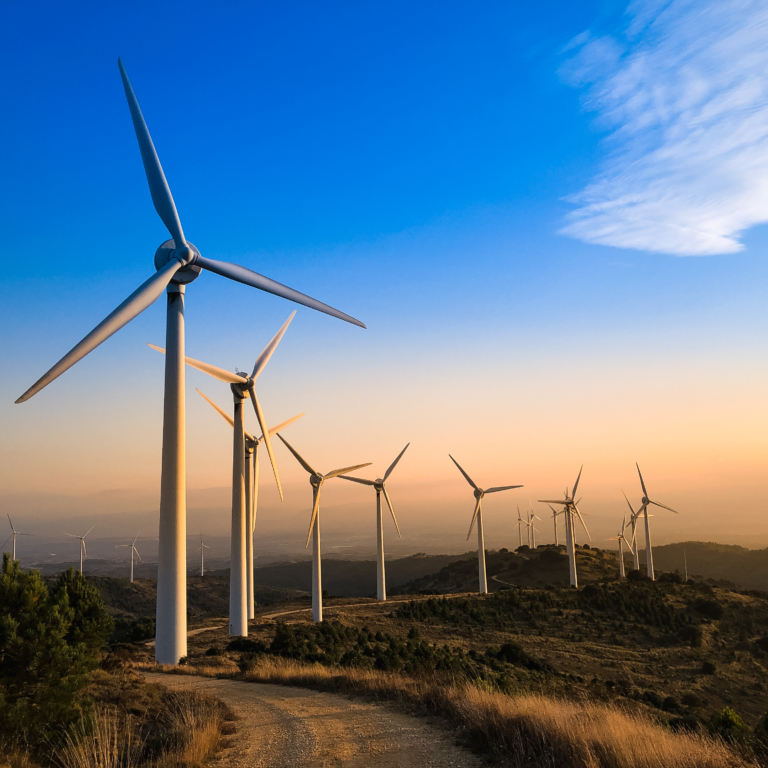
06
Bigger and broader in 2022
The test bed in Montana is demonstrating that the key elements of the monitoring solution are working and the 5G network is proving to be highly reliable, says Jim Kiles. “the key elements of the project are really having a 5G system that can communicate with the existing system without interference that can communicate back to the cloud through 5G and with the Qualcomm RB5 platform,” he adds.
In 2022, Vayu Ai plans to harness 5G connectivity in larger wind farms, beginning with a 20-turbine site and then a 50-turbine farm. “we’re going really aggressively into the marketplace with Qualcomm,” says Jim Kiles.
As it looks to scale its solution up, Vayu Ai is also working closely with software company Palantir, which supplies applications through which stakeholders can view and manipulate the data being captured by the 5G connectivity in the wind farm. “Qualcomm and Palantir are our key partners,” Jim Kiles explains. “we’re committing certainly over a hundred million dollars for deployment during 2022 and we are getting big support from the U.S. government department of energy because this has to happen now.”
In the U.S. and elsewhere, offshore wind is set be the fastest growing segment of the market by far – onshore wind farms can face opposition from local residents and people concerned about the aesthetics. the offshore wind market accelerated in 2021, with additions reaching 11 Gw of capacity, almost double that of 2020, according to the international energy Agency (ieA). the ieA forecasts total offshore wind capacity will more than triple by 20263.
As the wind industry looks to deploy more turbines off shore, wake data and analysis is set to become even more critical to their viability. that’s because off shore wind turbines can be very expensive to build, particularly those mounted on a floating platform. Hywind Scotland, equinor’s floating offshore wind farm has achieved a levelised cost of energy of £180/Mwh, compared with £55/Mwh for a fixed offshore wind farm in the UK4.
As it looks to help the wind industry build more turbines offshore, Vayu Ai is planning to expand to northern Europe, which is a major player in offshore wind – the north Sea is home to some of the world’s largest wind farms, including some of the first floating turbines. “right now we have very limited data and the data we do have is based on close-to-shore wind farms that operate differently than they do on land, but not the same at all as floating offshore wind,” explains Jim Kiles. “we need to prepare to go offshore, which is really what has to happen for the earth and what has to happen for the businesses.”
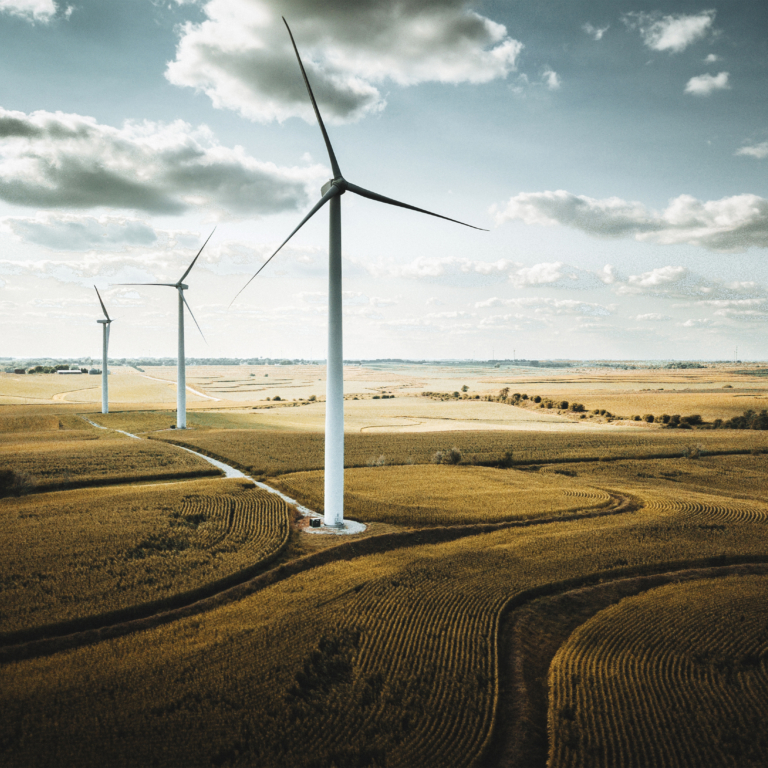
Sources
- 3. https://www.iea.org/reports/renewables-2020/wind
- 4. https://www.renewableenergymagazine.com/wind/research-project-to-investigate-application-of-wake-20210709
07
About
About the GSMA
The GSMA is a global organisation unifying the mobile ecosystem to discover, develop and deliver innovation foundational to positive business environments and societal change. Our vision is to unlock the full power of connectivity so that people,
industry, and society thrive. Representing mobile operators and organisations across the mobile ecosystem and adjacent industries, the GSMA delivers for its members across three broad pillars: Connectivity for Good, Industry Services and Solutions, and Outreach. This activity includes advancing policy, tackling today’s biggest societal challenges, underpinning the technology and interoperability that make mobile work, and providing the world’s largest platform to convene the mobile ecosystem at the MWC and M360 series of events.
For more information, please visit the GSMA corporate website at www.gsma.com.
Follow the GSMA on Twitter: @GSMA.
GSMA 5G Transformation Hub
The GSMA 5G Transformation Hub is a source of information on some of the most innovative 5G solutions in the world. This portal contains case studies detailing design, benefits, key players, measured value and the future impact of scaling up these 5G solutions worldwide. The 5G Era is now firmly established and this family of standardised GSM technologies, including mmWave, are being rolled out successfully across the globe. The GSMA 5G Transformation Hub, launched at MWC Barcelona in 2022, provides details of how 5G is best placed to deliver real value for a range of key sectors including manufacturing, energy, transportation, media and live entertainment, smart cities and construction.. Many more case studies will be added, in the coming months, covering even more industries and the GSMA is asking Members to nominate innovative 5G case studies to add to this global digital showcase. The 5G Transformation Hub and this particular Case Study are both sponsored by Qualcomm.
About this case study
This case study is for information only and is provided as is. The GSM Association makes no representations and gives no warranties or undertakings (express or implied) with respect to the study and does not accept any responsibility for , and hereby disclaims any liability for the accuracy or completeness or timeliness of the information contained in this document. Any use of the study is at the users own risk and the user assumes liability for any third party claims associated with such use.